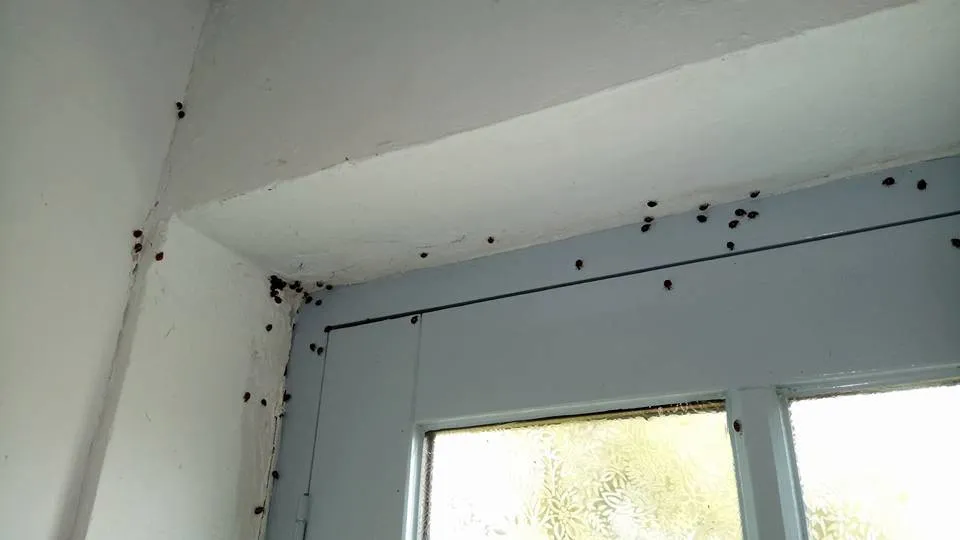Ladybirds, like many beetles, overwinter as adults, and to make sure they survive they must choose a suitable hibernation site. Cold is not their worry, they turn down their metabolism to a bare tick-over and enter a stable but quiescent torpor until warm spring rouses them. Damp on the other hand, can be fatal, making them susceptible to moulds and fungal diseases. A hibernation site is a dry site, and where drier than a human house?
1. The harlequin ladybird, Harmonia axyridis, is the species most likely to enter houses. This native of China and the Far East has been deliberately introduced as a biocontrol agent against pest aphids around the world, but arrived in England in 2003 apparently on its own. It is now widespread and very common.
2. Early hibernators start to make exploratory missions in September and October. They get in through open windows, under doors, or even through key holes.
3. They give off a chemical safety scent when they find a nice dry nook in which to settle down, often the corner of a room, against a cornice, or in a light fitting. This actively attracts others to join them. Bright ladybird colours are a warning that they are distasteful to predators, clusters emphasize this warning to potential enemies.
4. The scent lingers until the next year, so even though the new influx is the next generation, they can still smell out the safe places of their forefathers. The potential is for increasing ladybird hordes, year on year.
5. Native 7-spot ladybirds nestle down in threes of fours in dense grass tussocks, 16-spots cluster in knots of 20-30 on dead leaves, 2-spots gather in gangs of 5-15 under loose bark. In North America, the convergent ladybird converges on small caves in the hills, and one congregation was estimated at 30-40 million beetles.

Further useful information:
Harlequin ladybird survey: http://www.harlequin-survey.org
Image: Getty
